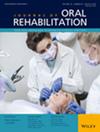Does the Dental Formula Predict Therapy Outcomes of Obstructive Sleep Apnoea Treated With a Mandibular Advancement Device ? A Retrospective Cross-Sectional Study
Abstract
Study Objectives
Obstructive sleep apnoea (OSA) is a prevalent sleep disorder with significant health implications. While complete edentulism has been associated with an increased OSA risk, the relationship with partial edentulism remains unclear. This study aimed to investigate the role of dental formula in OSA severity and mandibular advancement device (MAD) therapy outcomes.
Methods
A retrospective study initially included 560 patients diagnosed with OSA by polysomnography (PSG). A subset of 75 patients was selected for analysis based on predefined inclusion criteria. Dental parameters were assessed using baseline orthopantomograms. Objective treatment outcomes were evaluated using baseline PSG and repeat PSG with MAD after 3 months of therapy. Differences in OSA severity and MAD treatment outcomes were analysed, and dental parameters were correlated between groups.
Results
The median baseline apnoea–hypopnoea index (AHI) significantly reduced from 27.82 ± 16.77 to 15.51 ± 13.33 following MAD therapy. Partial edentulism parameters did not differ significantly or correlate with baseline OSA severity. However, a correlation was observed between the number of missing teeth and reassessed AHI (rAHI), and an inverse correlation between the masticatory coefficient and rAHI was also noted. Mandibular edentulism—primarily unilateral or bilateral posterior—was positively correlated with MAD treatment outcomes.
Conclusion
This study demonstrates a correlation between edentulism parameters and MAD treatment outcomes in patients with OSA. Collaboration between dentists and sleep medicine specialists is crucial for comprehensive OSA management, including oral health assessment.
Trial Registration: After evaluation and validation by the data protection officer and according to the General Data Protection Regulation, this study met all the criteria and was registered in the register of data study of the Toulouse University Hospital (Register Number: RnIPH 2023–81) and covered by the MR-004 (CNIL Number: 2206723 v 0).
This study was approved by Toulouse University Hospital and confirmed that ethical requirements were fully met in the above report.


 求助内容:
求助内容: 应助结果提醒方式:
应助结果提醒方式:


